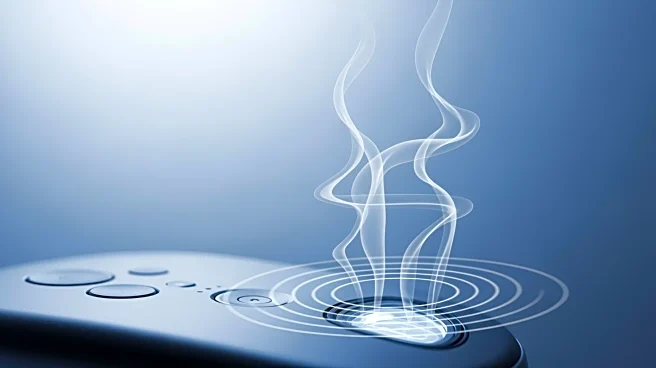What's Happening?
A team of researchers, including Lev Chizhov, has discovered a novel method to induce smell sensations using ultrasound technology. The technique involves targeting the olfactory bulb, located behind the nose,
with ultrasound waves. This approach circumvents the challenges posed by the nose's non-flat structure and air-filled cavities by placing the ultrasound transducer on the forehead and directing it towards the olfactory bulb. The researchers have developed a custom headset to precisely target specific areas of the bulb, guided by MRI imaging. In their initial trials, involving a sample size of two individuals, they successfully induced the perception of various smells, including fresh air, garbage, ozone, and burning wood. This innovative method opens up possibilities for applications such as virtual reality experiences that incorporate smell, although the exact potential uses remain speculative.
Why It's Important?
The development of ultrasound-induced smell sensations represents a significant advancement in sensory technology, with potential implications for various industries. This technique could revolutionize virtual reality by adding a new dimension of sensory experience, enhancing immersion and realism. It may also have applications in fields such as entertainment, gaming, and therapeutic treatments, where controlled olfactory experiences could be beneficial. Furthermore, this research contributes to the broader understanding of sensory processing and the capabilities of ultrasound technology in non-invasive neural stimulation. As the technology progresses, it could lead to new products and services that leverage smell as a key component, potentially impacting consumer electronics and healthcare sectors.
What's Next?
The researchers are likely to continue refining the technique and expanding their sample size to validate the findings further. Future studies may explore the range of smells that can be induced and the consistency of the sensations across different individuals. Additionally, there may be interest from commercial entities in developing applications or products based on this technology, particularly in the virtual reality and gaming industries. Ethical considerations regarding the manipulation of sensory experiences will also need to be addressed as the technology advances.
Beyond the Headlines
This development raises questions about the ethical implications of manipulating sensory perceptions, particularly in contexts where the induced smells could affect mood or behavior. The ability to control olfactory experiences could lead to new forms of advertising or influence consumer choices, necessitating discussions about consent and regulation. Moreover, the technology's potential to alter sensory experiences could have therapeutic applications, such as treating conditions related to smell loss or enhancing sensory rehabilitation. As research progresses, the long-term effects of ultrasound stimulation on the olfactory bulb and overall neural health will need careful examination.












